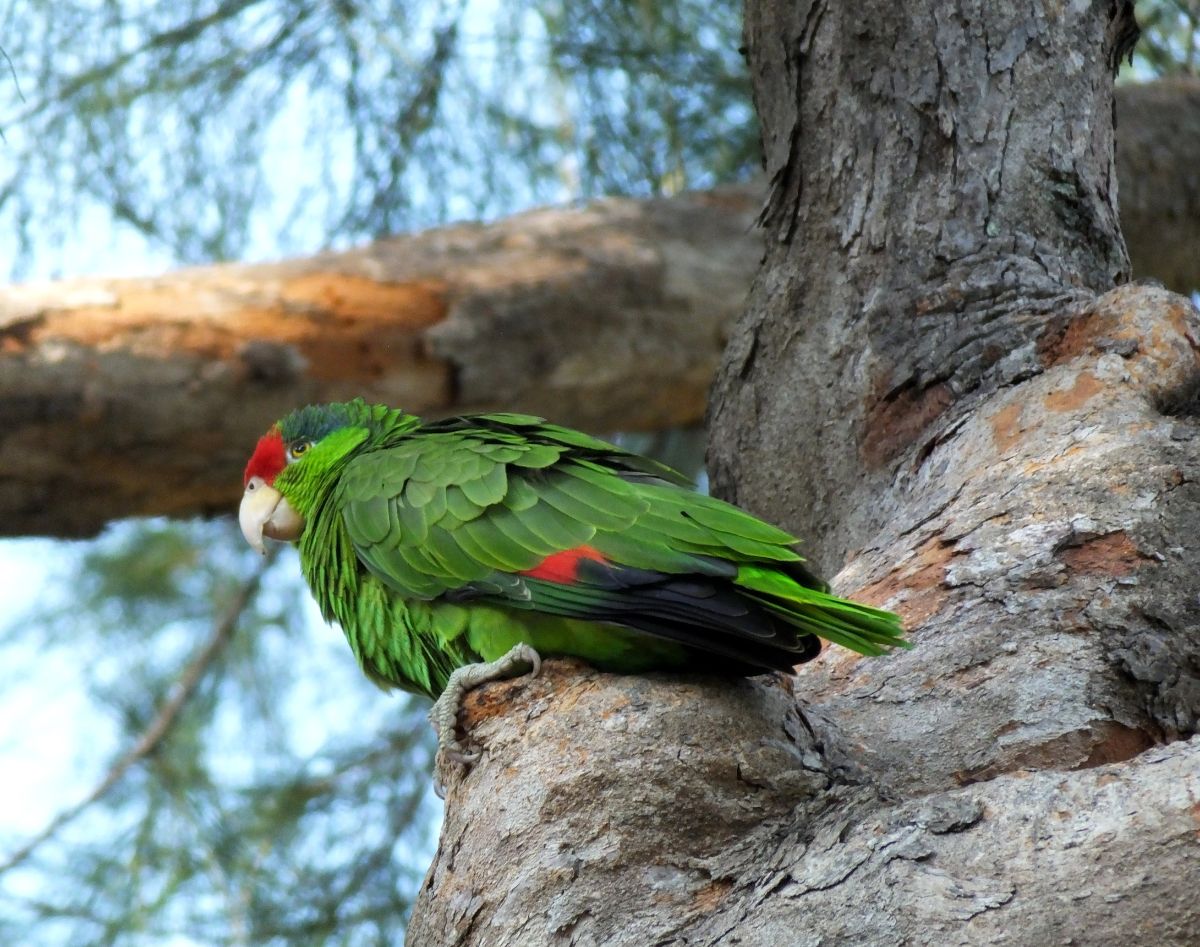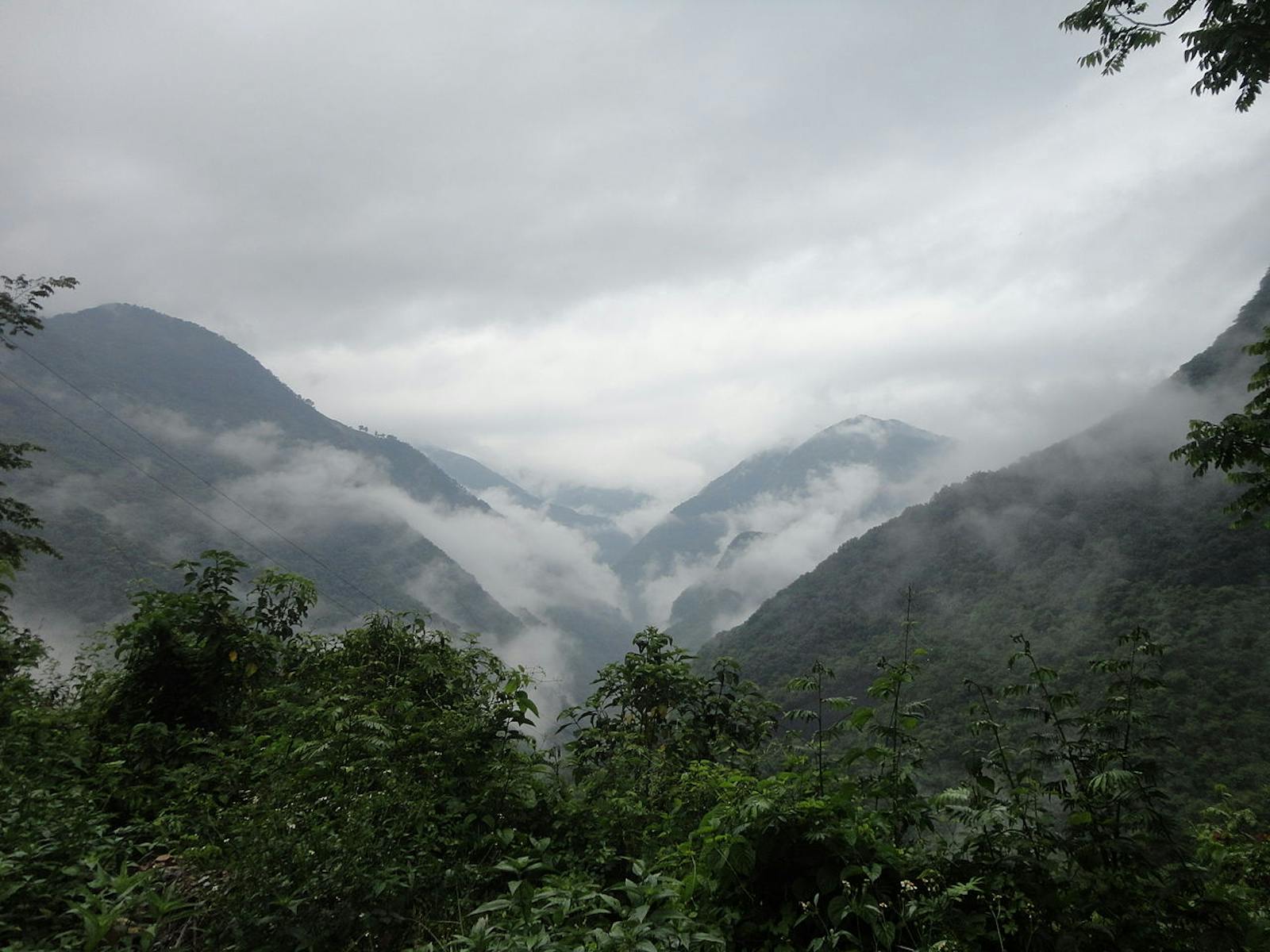Veracruz Montane Forests
The ecoregion’s land area is provided in units of 1,000 hectares. The protection goal is the Global Safety Net (GSN1) area for the given ecoregion. The protection level indicates the percentage of the GSN goal that is currently protected on a scale of 0-10.
Bioregion: Yucatan & Veracruz Mixed Forests (NT27)
Realm: Central America
Subrealm: Central America
Ecoregion Size (1000 ha):
497
Ecoregion ID:
515
Conservation Target:
73%
Protection Level:
1
States: Mexico
The greater bromeliad treefrog is endemic to the Veracruz Montane Forests ecoregion and surrounding areas. They prefer higher elevations within cloud forest habitats where bromeliads—“pineapple-like” flowering plants that grow on the branches of trees—are abundant. Bromeliads importantly collect water which pools in the center of their leaf swirl, providing the perfect habitat for treefrogs. As their name suggests, these frogs breed and take refuge in these bromeliads throughout the ecoregion. Many other species use these arboreal pools, from tiny mosquitoes which breed in them to large primates which use them for a drink on their way past.

The red crowned Amazon parrot (Amazona viridigenalis) is the flagship species of the Veracruz Montane Forests ecoregion. Image credit: © Passion4Nature | Dreamstime
The Veracruz Montane Forests are located in the Mexican State of Veracruz and are remnant of the Sierra Madre Oriental mountain range. They are the northern-most montane forests in Mexico. The climate is temperate humid with summer rains and abundant fog throughout the year, due to the continuous rain that averages 1,200–1,500 mm/year. These forests grow on soils of volcanic origin with a high content of organic matter.
Dominant tree species are Liquidambar macrophylla and Mexican royal oak, both are excellent at utilizing the soil content and reach around 40 m. In the south at high elevations Mexican elm, Quercus skinneri, Carpinus tropicalis, and Meliosma alba are also common plant associations. In areas of canyons where the soils are deep, Engelhardia mexicana becomes the dominant species.
The montane forests of Veracruz represent the northernmost intact montane forests in Mexico. They have been isolated from other forests of their kind since the Pleistocene. Because of this isolation, many researchers consider them as habitat islands with their own hosts of endemic species. The forests of Veracruz is the last habitat for the vulnerable fern Cyathea mexicana as well as the endangered cloudforest magnolia. Approximately 432 species of plants live in these forests, many of which are endangered or have restricted distributions.
In general, the forests faunal assemblages are composed of 29 species of amphibians, 47 reptiles, 114 birds, and 14 mammals. They represent almost 40% of the total endemic vertebrates of Mesoamerica. The region is considered an important migratory route for many birds, due to its location between Neotropical and Nearctic areas. Butterflies in the family Papilionidae are known to take refuge here from adverse weather conditions.
Large portions of the cloud forest have been transformed to vast fields dedicated to cattle grazing and coffee plantations. Veracruz leads in cattle production in Mexico. The fragments of montane forest that remain still support many species, but the reduced distribution and population size has endangered many. Most of the montane forest of Veracruz has been eliminated outside of areas of very steep slopes and deep canyons that likely will not be able to support the extraordinary diversity of the cloud forest communities over the long term.
Coffee plantations are the main cause of habitat destruction in montane forests because their rich soils and climatic conditions are favorable for growth and development of coffee plants. The distribution of areas covered by coffee plantations overlaps almost completely with the areas still occupied by montane forests. Human settlements, agriculture, and exploitation of piroclastic deposits for the building industry also contribute to habitat destruction and perturbation of soils, which in turn depletes the forest’s ability to regenerate. Logging of the forest for wood and timber is another major threat to this ecoregion and the species that depend on it.
Priority conservation actions for the next decade:
- Lead educational workshops and outreach about shade grown coffee and other integrations of natural vegetation into agriculture
- Increase the number and capacity of protected areas.
- Implement programs to scale forest finance, giving the community a economic incentive to protect the forests.
-
-
1. Valero, A. Schipper, J. Allnutt, T. 2019. Southern North America: Eastern Mexico https://www.worldwildlife.org/ecoregions/nt0177 Accessed May 24, 2019.
2. Challenger, A. 1998. Utilización y conservación de los ecosistemas terrestres de México. Pasado, presente y futuro. Conabio, IBUNAM y Agrupación Sierra Madre, México.
3. Flores-Villela, O. and A.G. Navarro. 1993. Un análisis de los vertebrados terrestres endémicos de Mesoamérica en México. Revista de la Sociedad Mexicana de Historia Natural (edición especial) XLIV: 387-395. -
Cite this page: Veracruz Montane Forests. Ecoregion Snapshots: Descriptive Abstracts of the Terrestrial Ecoregions of the World, 2021. Developed by One Earth and RESOLVE. https://www.oneearth.org/ecoregions/veracruz-montane-forests/
-



